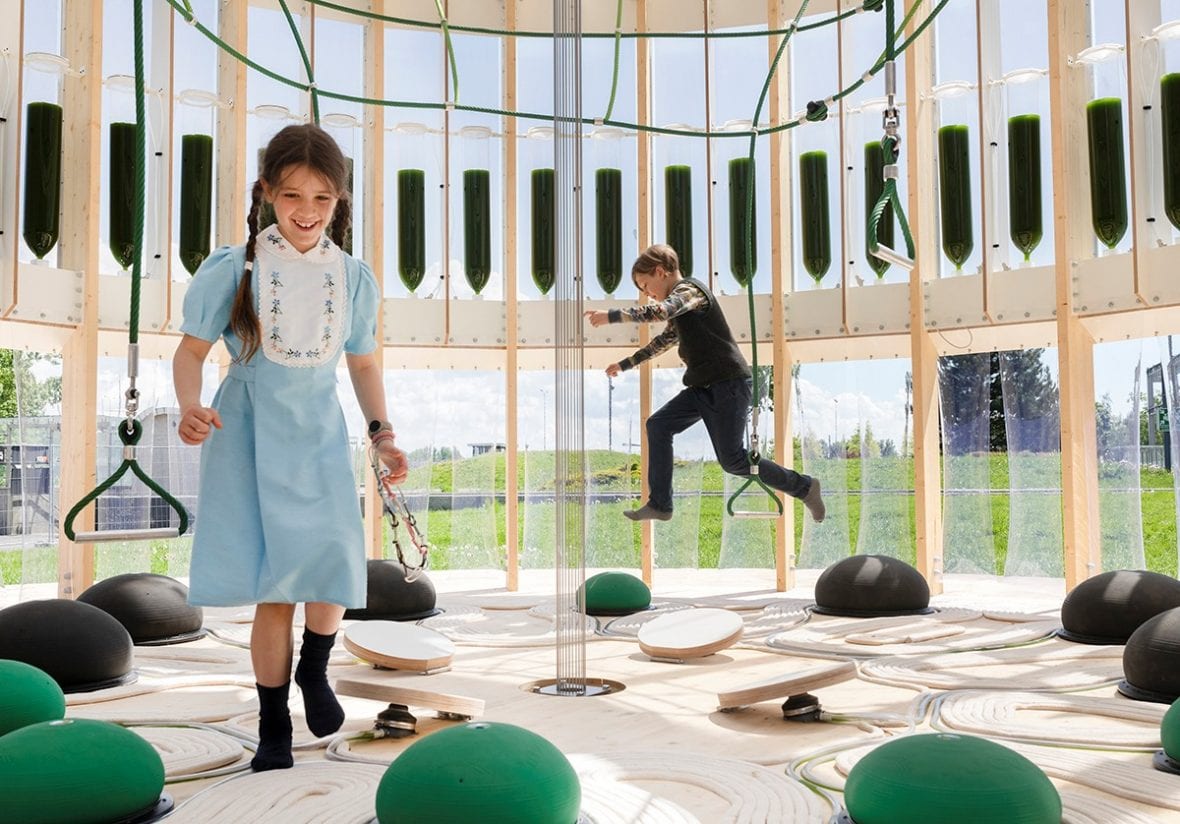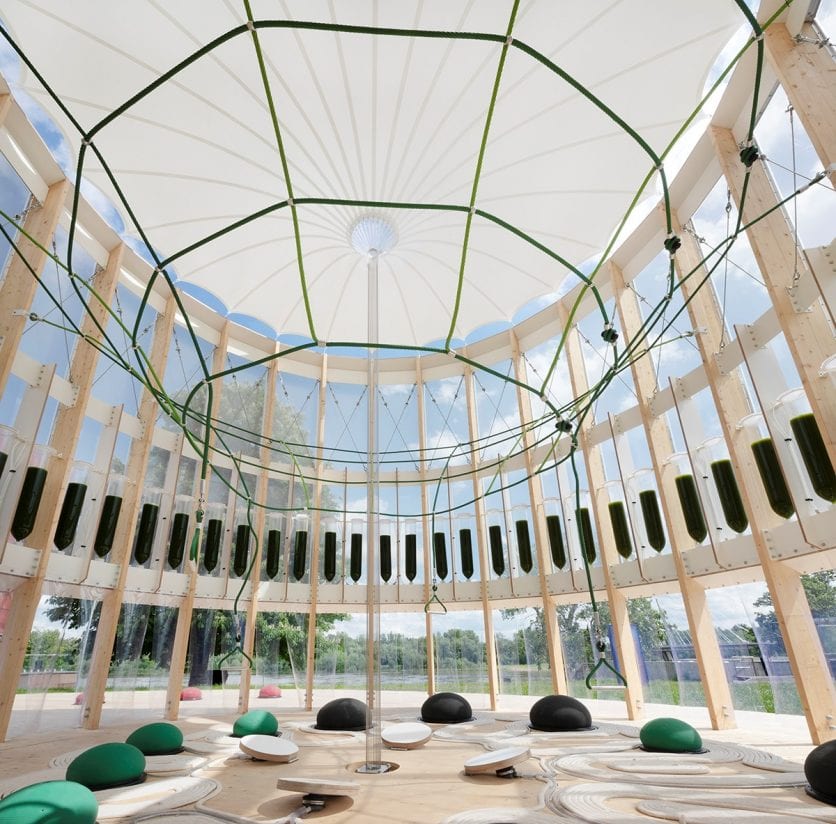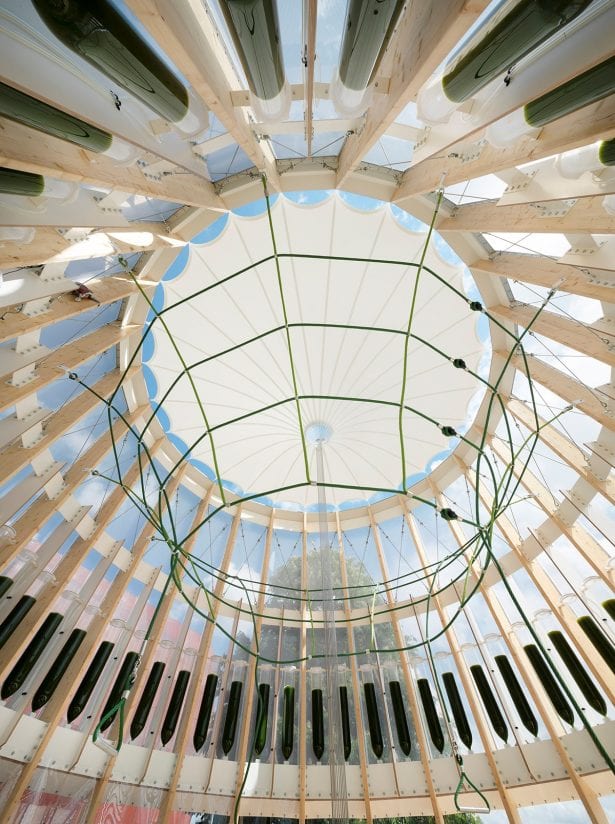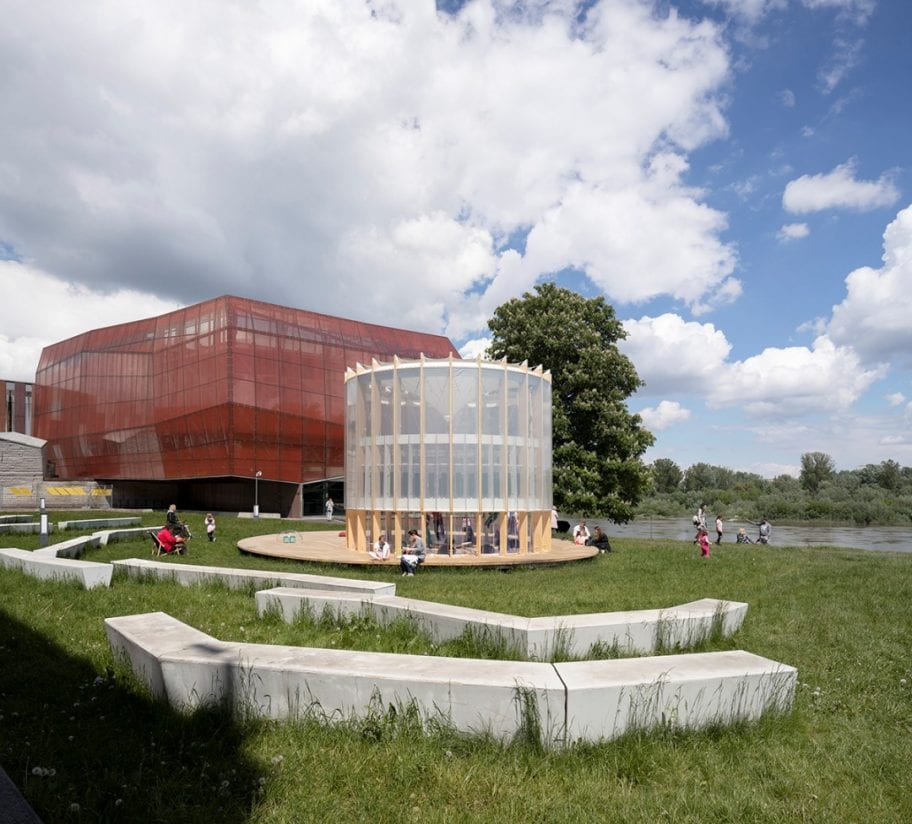A Clean-air Playground in Poland
London-based architecture and innovation firm ecoLogicStudio , led by Claudia Pasquero and Marco Poletto, has designed AirBubble for Otrivin Breathe Clean that creates a purified microclimate for children to play in.
According to the World Health Organization (WHO), 93% of children in the world play in harmful levels of air pollution which is also the biggest global health threat. Warsaw was selected as the first activation for a project that supplies clean air to playgrounds as it is one of the most polluted cities in Europe. The innovation by ecologicStudio brings to life the world’s first biotechnological playground to integrate air-purifying micro-algae to create a purified microclimate for children to play in, a true bubble of clean air in the centre of Warsaw (Poland).
The project is located within the public green space outside of the Copernicus Science Centre (Centrum Nauki Kopernik), a site that will also host a dedicated exhibition illustrating the design innovation behind the invention of AirBubble. The playground integrates the Photo.Synthetica technology for the advanced integration of photosynthesis in the built environment.
“There is untapped value in bringing the bio-intelligence of natural systems into cities, turning buildings into living machines that produce energy, store CO2 and clean the air. To achieve this, we need to think about the living world as a part of the current digital revolution: nature becomes part of new bio-smart infrastructure,” says Marco Poletto, co-founder of ecoLogicStudio.
“AirBubble invents a new architectural typology. It incorporates a cylindrical timber structure wrapped in an ETFE membrane protecting 52 glass algae reactors. This creates a real urban algae greenhouse. The space is equipped with ropes, foot pumps and bouncy spheres, and can function as both playground and outdoor classroom. The white bubbling noise of the algae gardening system masks the surrounding urban noise to provide a calming atmosphere in which to play and interact,” explains Claudia Pasquero, co-founder of ecoLogicStudio.
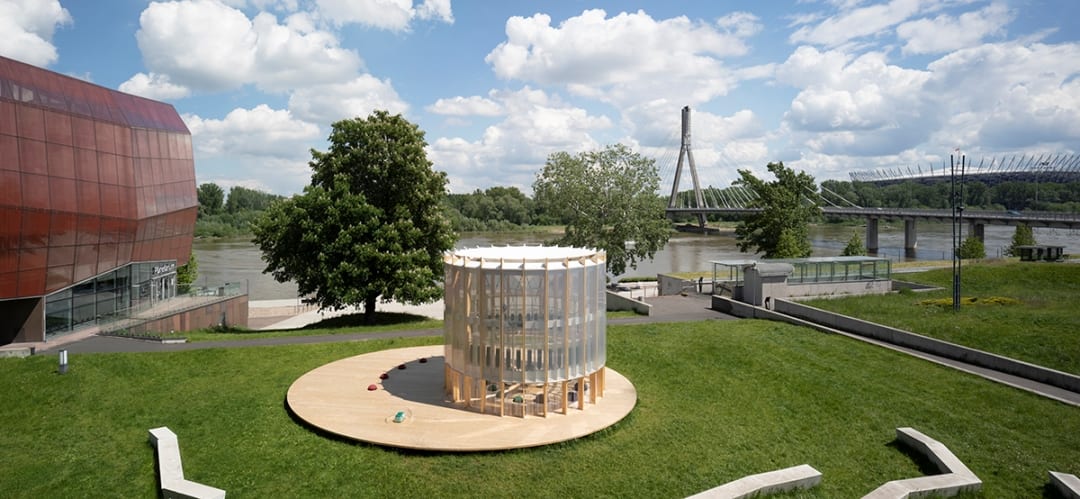 The filtering process is enhanced by the architectural morphology of the playground structure. The ETFE membrane – an evolution of the PhotoSynthetica urban curtain system presented in Dublin in 2018 by ecoLogicStudio – controls the microclimate inside AirBubble. The inverted conical roof membrane further stimulates the air recirculation and natural ventilation, which in turn keeps the play area clean. The AirBubble hosts 52 large bioreactors in borosilicate glass which contain 520 litres of living green Chlorella sp algae cultures that can filter a flow of polluted air of 200 litres/minute. While the liquid medium washes particles, the algae actively eat the polluting molecules as well as carbon dioxide to then release fresh clean oxygen.
The filtering process is enhanced by the architectural morphology of the playground structure. The ETFE membrane – an evolution of the PhotoSynthetica urban curtain system presented in Dublin in 2018 by ecoLogicStudio – controls the microclimate inside AirBubble. The inverted conical roof membrane further stimulates the air recirculation and natural ventilation, which in turn keeps the play area clean. The AirBubble hosts 52 large bioreactors in borosilicate glass which contain 520 litres of living green Chlorella sp algae cultures that can filter a flow of polluted air of 200 litres/minute. While the liquid medium washes particles, the algae actively eat the polluting molecules as well as carbon dioxide to then release fresh clean oxygen.
The AirBubble monitoring system integrates urban air pollution sensors and is connected to a data processing platform capable of comparing measurements in real-time and of highlighting the Air Quality Index for six core pollutants: fine particulate PM2.5 and PM10, ground-level Ozone (O3), Nitrogen Dioxide (NO2), Sulphur Dioxide (SO2) and Carbon Monoxide (CO). AirBubble is capable of absorbing 97% of the nitrogen and 75% of the particulate matter in the air.
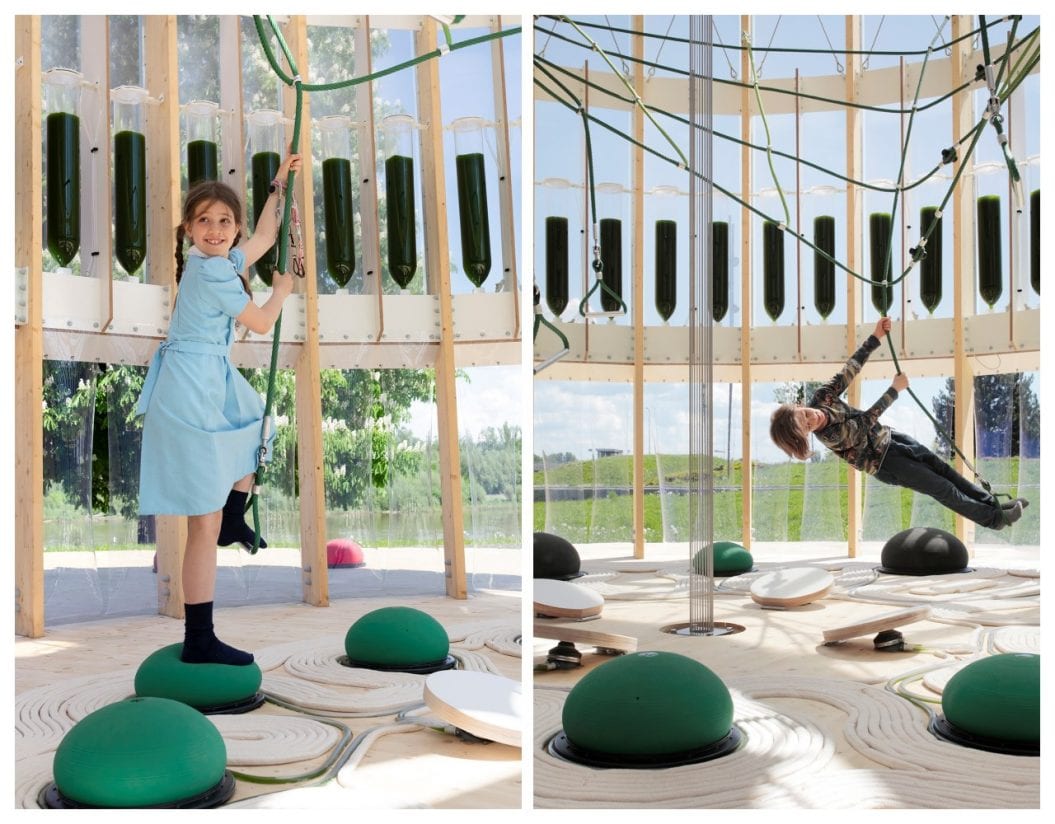 Early data collected in May 2021 shows concentrations of PM2.5 within the playground have fallen well within the recommended WHO limits (green zone, AQI below 20). The peak reduction rate is an impressive 83%. This figure has been calculated by comparing readings from a pollution sensor located outside AirBubble with real-time data feeds from a monitoring device placed inside. The monitoring phase will continue throughout the summer and into the autumn to verify these promising achievements over a longer period of time, under different climatic conditions and patterns of use, reveal the architects.
Early data collected in May 2021 shows concentrations of PM2.5 within the playground have fallen well within the recommended WHO limits (green zone, AQI below 20). The peak reduction rate is an impressive 83%. This figure has been calculated by comparing readings from a pollution sensor located outside AirBubble with real-time data feeds from a monitoring device placed inside. The monitoring phase will continue throughout the summer and into the autumn to verify these promising achievements over a longer period of time, under different climatic conditions and patterns of use, reveal the architects.
“Over the next few months, AirBubble will become a unique urban laboratory, a testbed of applied biotechnology and its application in tackling air pollution and in mitigating its effect on children’s health,” they say.
The purifying process is powered by solar energy and children’s playfulness. Kids can interact by jumping on four water foot pumps positioned on the ground while balancing on the bouncy bubbles and the internal rope system.
“This playground needs two sources of power: solar energy and kids’ instinctive drive to explore and to play. These constitute the inexhaustible and renewable fuels of the AirBubble that can be obtained effortlessly. The AirBubble is the trigger of a process that can only grow and multiply its beneficial effects towards future generations. It’s all in our hands – we are responsible for our health and climate,” explains Claudia Pasquero.
All Images Courtesy EcoLogicStudio.


